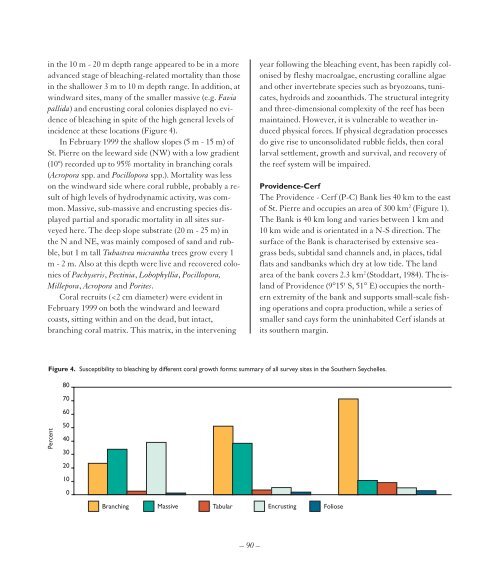You also want an ePaper? Increase the reach of your titles
YUMPU automatically turns print PDFs into web optimized ePapers that Google loves.
in the 10 m - 20 m depth range appeared to be in a more<br />
advanced stage of bleaching-related mortality than those<br />
in the shallower 3 m to 10 m depth range. In addition, at<br />
windward sites, many of the smaller massive (e.g. Favia<br />
pallida) and encrusting coral colonies displayed no evidence<br />
of bleaching in spite of the high general levels of<br />
incidence at these locations (Figure 4).<br />
In February 1999 the shallow slopes (5 m - 15 m) of<br />
St. Pierre on the leeward side (NW) with a low gradient<br />
(10º) recorded up to 95% mortality in branching corals<br />
(Acropora spp. and Pocillopora spp.). Mortality was less<br />
on the windward side where coral rubble, probably a result<br />
of high levels of hydrodynamic activity, was common.<br />
Massive, sub-massive and encrusting species displayed<br />
partial and sporadic mortality in all sites surveyed<br />
here. The deep slope substrate (20 m - 25 m) in<br />
the N and NE, was mainly composed of sand and rubble,<br />
but 1 m tall Tubastrea micrantha trees grow every 1<br />
m - 2 m. Also at this depth were live and recovered colonies<br />
of Pachyseris, Pectinia, Lobophyllia, Pocillopora,<br />
Millepora, Acropora and Porites.<br />
Coral recruits (


















